The origins of the history of the Canary Islands are intertwined with myths and legends and several different theories exist. In any case we must go back to classical times in order to find the first historical references to Gran Canaria. Research into the Island's earliest population points to a link with North Africa and the Berber cultural heritage. It would seem that the island was colonised at around 500 B.C. Most of the many people and cultures that arrived in the archipelago during the pre-Hispanic period settled in Gran Canaria.
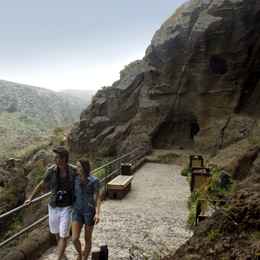
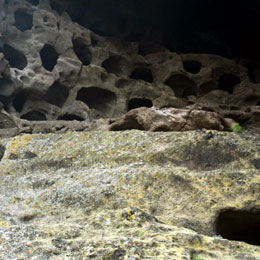
The conquest of the Island, which took place during the reign of the Catholic Monarchs in the last third of the fifteenth century, was fiercely resisted by the natives of the Island. The definitive annexation of Gran Canaria by the Crown of Castile was the work of Pedro de Vera, who, in 1483, completed the conquest that was started earlier by Juan Rejón. The conquest took place in two phases: firstly, the landing and subsequent construction of Real de Las Palmas at the mouth of the Guiniguada ravine; and, secondly, Vera's military campaign, which ended with the subjugation of the aboriginal people of Gáldar, as well as the campaign for the pacification of the southern slopes of the island.
From this time onwards the Crown of Castile began to infiltrate the Island of Gran Canaria in political, social and economic terms. The capital of Gran Canaria became the administrative centre and epicentre of the planning of the archipelago (the Bishopric of the Canaries, the Court of the Holy Inquisition, the Royal Court of the Canaries...). During the 17th century, some cracks started appearing in the splendour of Gran Canaria, which was caused by a lull in the exportation of agricultural products to America and also to the rest of Europe.
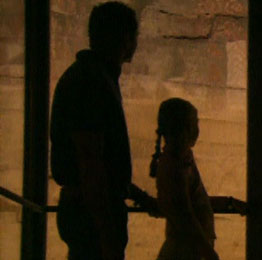
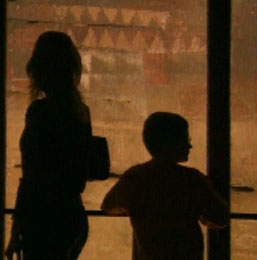
Not until the mid-nineteenth century was the free port system established in the Canary Islands. This was a special economic regime designed to favour trading relations. This new regime, based on tax exemptions and facilities for free trade acted as a major trading attraction and the number of British ships and shipping companies calling in at the Island soon multiplied. Currently, the geographical isolation of Gran Canaria and the Archipelago in general is formally recognised in the Economic and Tax Regime Law, which has recently been adapted and somewhat diminished by the full incorporation of the Canary Islands within the European Union.
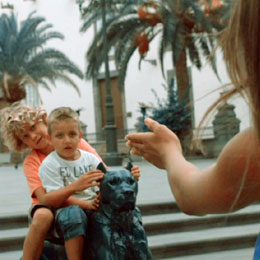
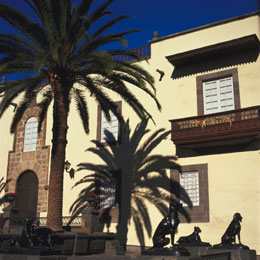
It was precisely because of the shipping traffic that the tourism industry was born in Gran Canaria. Over the years, tourism would eventually become the main source of income for the island, which would become one of the main tourist destinations in the world. From the second half of the 19th century, Gran Canaria started gaining popularity in European circles as a place of rest for tourists and the infirm. Shipping companies soon took advantage of the opportunity to equip their vessels with cabins for the transport of passengers. These companies would also take the initiative in the building of the first hotels on the island, one of which was the hotel of Santa Catalina (1890) in Las Palmas de Gran Canaria, this being the only hotel dating from the early beginnings of tourism that still remains open.
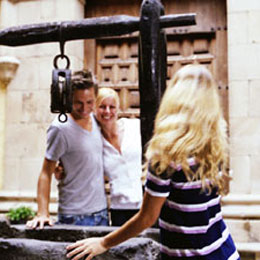
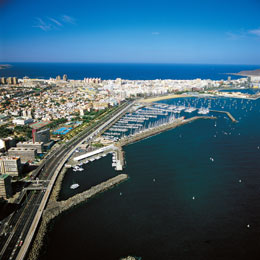
The development of tourism and the services that had sprung up around tourism was interrupted by a number of wars (the World Wars and the Spanish Civil War) and it would only be in the fifties when the island would again receive any significant numbers of tourists. During this slump, the tourism industry could not even be revived by the opening of the Airport of Gran Canaria (called Gando in those times) in 1930.
At Christmas of 1957, an aeroplane of the Swedish airline, Transair AB, landed at Gando with all 54 of its seats occupied. This was the first of a series of charter flights with which Gran Canaria launched itself in the organised mass tourism market as well as the modern tourism industry.